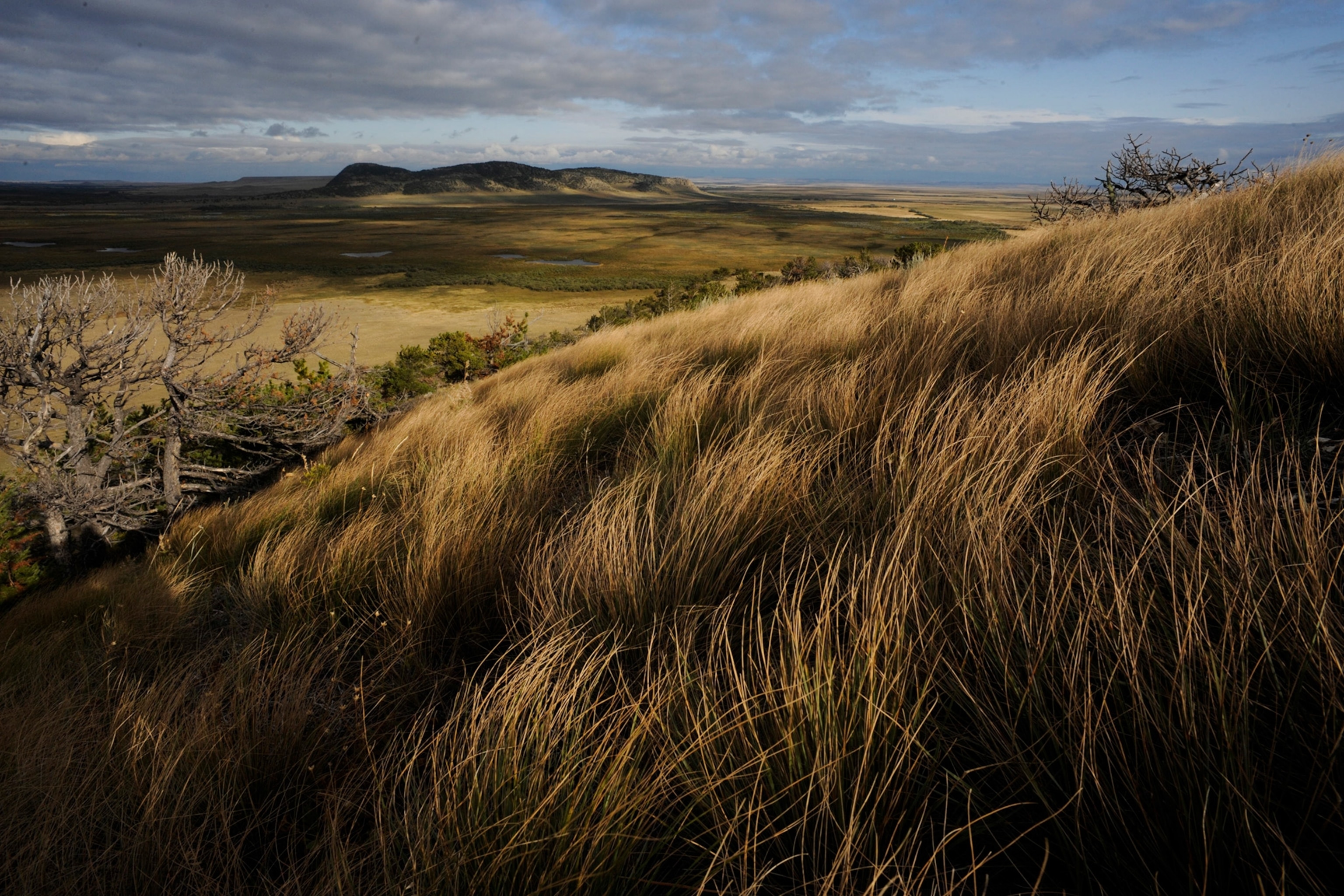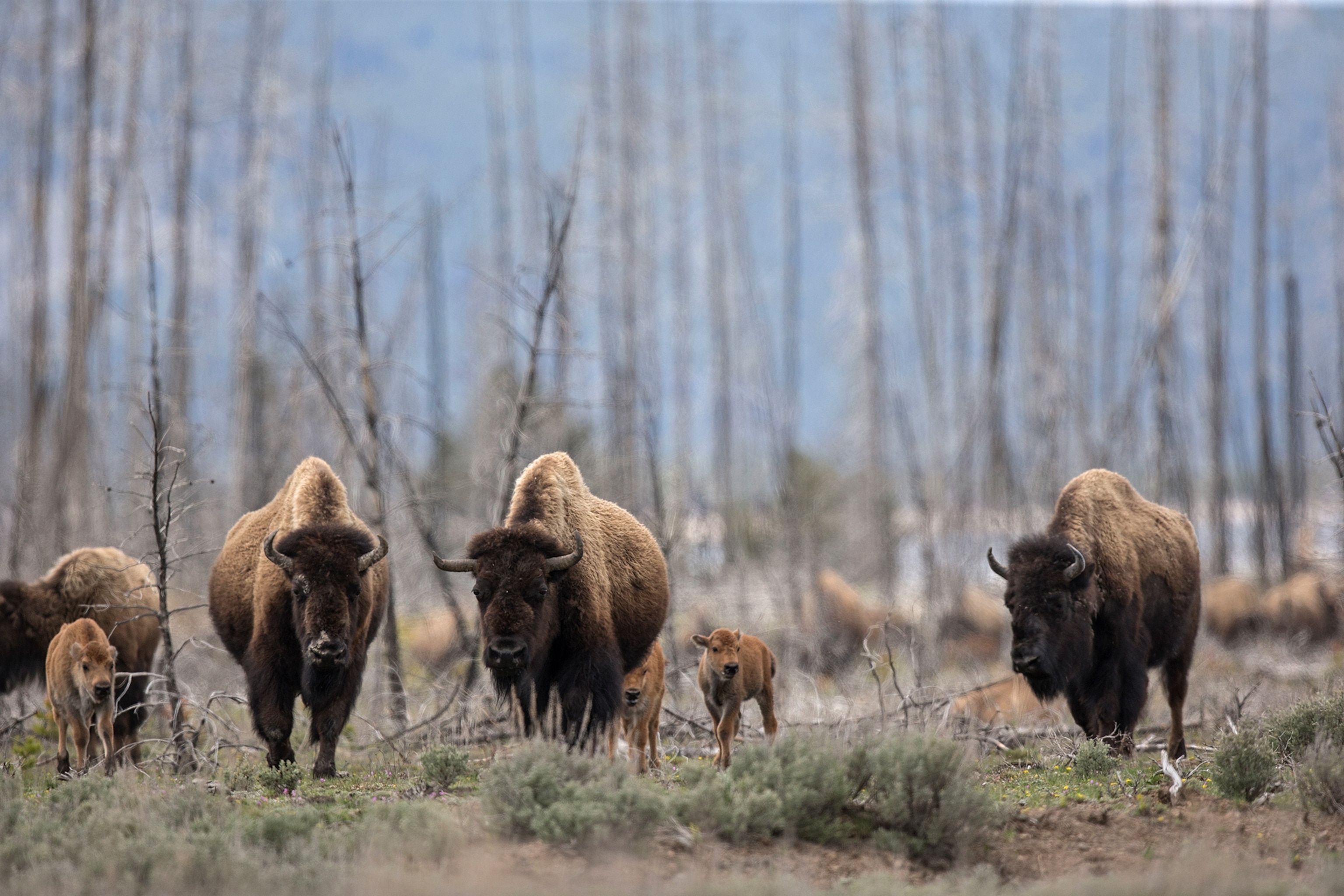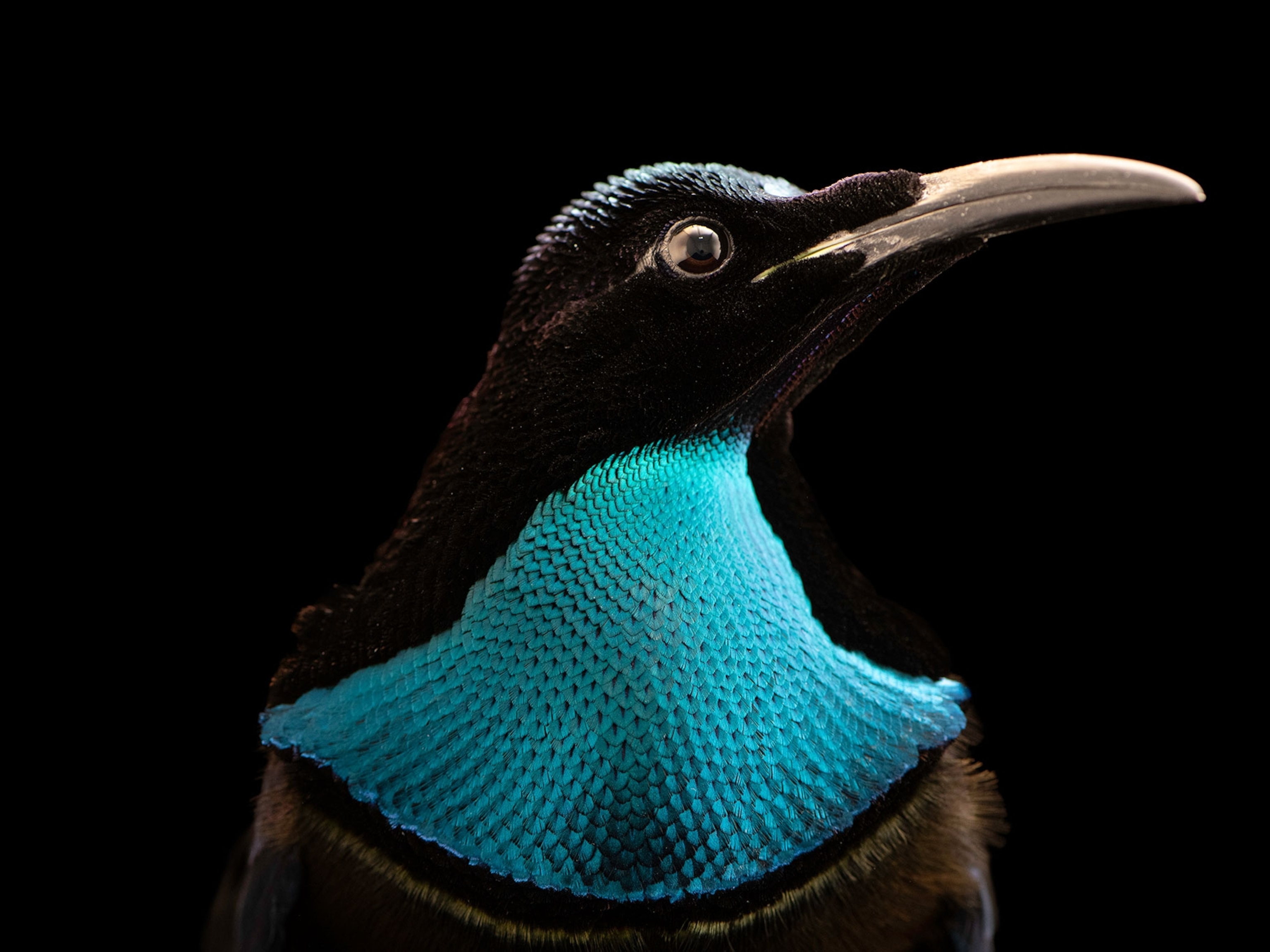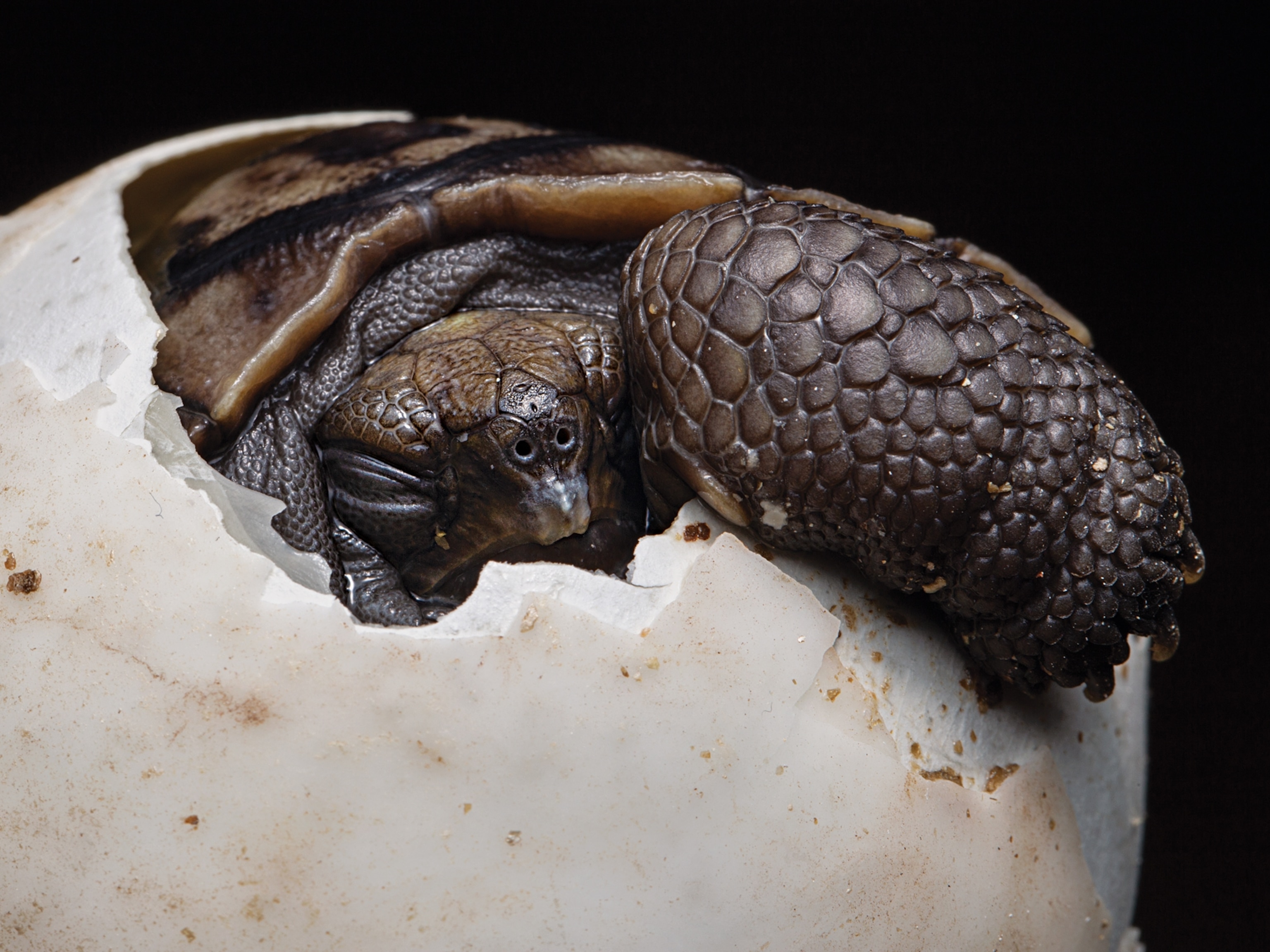
How cattle can help save the birds of the Great Plains
Ranchers and environmentalists are partnering to curb the decline of prairies and songbirds.
It’s a sweltering summer day in central Montana. Here, in the heart of Big Sky country, no matter how hot it gets, blue jeans and cowboy boots are the norm, to protect against the whipping wind and the threat of thunderheads that can materialize without warning on the horizon.
Rancher Bill Milton surveys his land with wildlife biologist Dan Casey from a bumpy dirt road etched into the mottled green and gold landscape, 50 miles outside of Billings. Rolling through the land in Casey’s Prius, we’re on the western margin of the northern Great Plains, where shortgrass prairie once dominated the landscape. Casey points out an apple-sized bird on the right hand of the road.
It’s a chestnut-collared longspur, whose males sport a glossy black breast topped with a rich brown collar. Once numerous in the short and mixed grass prairies that used to be trimmed naturally by bison and wildfire, the longspur’s population has declined by more than 80 percent in the last 50 years.
It’s not just this species that’s in trouble, says Casey, who co-authored the tome Birds of Montana, as well as the state’s massive avian management plan. According to Casey, since 1970 Great Plains grassland songbirds have declined nearly 70 percent, a collapse rivaling that of insect and marine fish populations. Climate change, outdated grazing practices and urbanization are definite factors in the decline but agriculture's intensification is the main culprit.

Thankfully there’s growing recognition of the problem, and historically unlikely alliances are forming between conservationists like Casey and ranchers like Milton—which could benefit all sides. One example is the Northern Great Plains Joint Venture (NGPJV), a cohort of 15 entities that aims to protect and restore native bird habitats, which Casey coordinates. Spearheaded by the U.S. Fish and Wildlife Service, 21 additional Joint Ventures span North America.
"We need more people to feel morally obligated to care about species other than humans or ones with big eyes and fur," says professor William Lauenroth of Yale’s School of Forestry and Environmental Studies.
Two sides of the road
Though these birds and transient and somewhat inconspicuous, they can be spotted with a trained eye—and the economic services they provide humans include seed dispersal, insect predation, pollination, not to mention their symphony of songs.
Casey explains, as we sit in the car, the differences between the left and the right side of the road. The left is dominated by non-native species like alfalfa and clover, appearing as a mix of olive, sage, and green tones. The right side, where we see much more bird life, appears more brown and wilted—but is actually healthier and more suitable for wildlife.
Closer inspection of the ground on the left reveals hard and nearly bare terrain. “There are no grasses for the birds to nest in,” Casey explains. Local plant species that once sustained the ecosystem have been pushed out by exotic crops.
The right side of the road, while less verdant, includes a mix of a native species like blue gramma, buffalo grass, and fringed sage. Decomposing duff from the prior season pads and protects the soil, a shade darker from the moisture it retains. Compared to the other side, this land is more resistant to weather extremes, disease, and unwanted insects—and provides more food, habitat, and serves as a storehouse of carbon, water, and important nutrients.
From where we stand, the prairie feels vast. Though a shadow of its former self, its remnants span more than 180 million acres, five states, and two provinces. But from a bird’s eye view—like that of the longspur or any of the four other native songbird species NGPJV has targeted for protection—the greater landscape is a fragmented patchwork of agriculture, ranchland, and development. The critical habitat this landscape provides for numerous species and its increasing fragility often go unnoticed.
“Generally there’s more awareness of the destruction of rainforests in Brazil than there is of the habitat that’s changed the most on our continent,” Casey says.
Prairie loss
Between 2015 and 2016, the Great Plains lost 2.5 million acres of previously intact grasslands to crop production. Monocultures of wheat, corn, soy, and canola are by far the biggest users of cropland, and with worldwide demand for grains predicted to double by 2030, pressure is mounting. On top of that, urban development and energy exploration take a toll.
Though revered as the United States’ breadbasket, the Great Plains were never afforded the same protections as the country’s more conventional scenic attractions like forests.
“It’s easy to look at an old growth and see what makes it old growth, with its big trees with lots of structure,” says Casey, describing the temperate rainforests of the Pacific Northwest. But prairies also have a high level of complexity, which allows many species to make their home there.

“The McCowan’s longspur like the grass a little shorter; the chestnut a little longer; the grasshopper sparrow even longer. You don’t get that variation with monoculture,” Casey says. That’s why modern agricultural practices are so detrimental to these landscapes and the species that inhabit them. Plus, monocultures strip the soil of nutrients and moisture, which is part of what makes their negative effects so hard to undo.
“One can graze the grassland and make some management mistakes and expect to recover in a decade. But once you’ve removed surface layers of soil—it’s a process likely to take centuries to millennia to get back,” explains Lauenroth, who specializes in grassland ecology. While can grasses recover quickly the herbaceous, non-flowering plants called forbs and the soil’s nitrogen and carbon storage capacity can take upwards of a century to even begin regenerating.
Migratory songbirds, also known as passerines, rely on different locales to meet their specific needs for breeding, wintering, and through travel, which make them early indicators of environmental imbalance in each of these areas. But the indications aren’t good. Northern grassland songbirds, like the Sprague’s pipit, Baird’s sparrow, lark bunting, and the longspurs, show the largest and steepest decline of any species group on the entire continent. They’ve dropped between 65 and 94 percent since the 1960s.
In Chihuahua, Mexico, which serves as wintering grounds for many of these birds, grasslands are getting turned by ploughs even more quickly than in Montana. But Casey’s work on bird populations prioritizes the protection of the Northern Plains in particular.
He emphasizes that birds have to produce young in order for their species to survive. “That’s what we’re putting our efforts into—the loss of breeding habitat,” Casey says. With more than 80 percent of the Northern Plains in private hands, the key to Casey’s and the NGPJV’s success is working with landowners. And their focus is on ranchers.
Where the bison roam
That’s because the Plains, including its songbirds, evolved with an animal that had relatively similar grazing habits to modern beef cattle: the bison. Large ungulates, like bison, influenced the landscape through their bodily waste, wallowing, and the impact of their hooves.
As ungulates moved freely across the landscape, the mosaic of vegetation that followed encouraged a diversity of bird species, each suited to a different grassy niche. And like the bison, the birds fill a critical role in the ecosystem, dispersing seeds, controlling insects, and mitigating weeds.

When sustainably grazed and rotated through fields to give the land time to recover, cattle such as Milton’s can mimic the impacts of native bison and actually do more good than harm to the ecosystem. According to Lauenroth, data has supported this concept for over forty years, but economics, tradition and limited education has slowed the transition to more sustainable ranching methods. The NGPJV is working with ranchers to rehabilitate and further protect the health of the landscape while maintaining the viability of their livelihoods by leveraging partnerships between the U.S. Department of Agriculture’s Natural Resource Conservation Service and private funding. Meanwhile, organizations like American Bird Conservancy and their Mexican counterpart, Pronatura Noreste, have implemented similar sustainability programs on nearly 70,000 acres on ranches in the bird’s wintering grounds in the Chihuahuan Desert.
As we drive past a scuffed yellow sandstone bluff, Milton slows to show where he spotted two nesting bobolinks recently, in an area where he had planted native cover crop two years prior.
“To use this paddock, we’re going to have to put up temporary fencing; that’s not something everyone wants to do,” because it requires additional hard labor, says Milton, referring to one of the drawbacks of the rotational grazing system he’s utilizing.
But the upside of shifting his reliance to native pastures is that Milton is not spending nearly as much money applying chemicals and can spend more time helping his calves. Most importantly, the ranch, and thereby Milton and his family’s future, is more resilient. “It seems the most efficient way to raise the animals,” he says,. “Work with the landscape and keep the business enjoyable.”
Rotating fields
Later, at Milton’s ranch, he shapes ground beef from one of his of Black Angus cows into patties, before serving us hamburgers. Milton explains that for many years the prevailing style of rangeland management was based on each pasture receiving rest two out of every three years.
But beginning around the 1960s, corporate ranch owners then began to increase their intensity, grazing every year and spraying herbicides and pesticides on the vegetation to maximize production.
As a result, the diversity of grassland species plummeted, leading to the degraded condition of much of the short grass prairie today. To improve the overall grazing strategy going forward, Milton says ranchers need to exercise “flexibility, adaptivity, collaboration, imagination.”
Milton may as well be talking about songbirds, conservation organizations, and ranching communities alike. Implementing large-scale change takes time, energy and money—lots of it. The NGPJV helps ranchers with funding for water tanks, fencing, prescribed burns, and the conversion of cropland and non-native pastures back to traditional grasses. Not only do these measures benefit the birds, but they also help store and filter water, fortify the soil against erosion, and capture carbon.
“There will be people who think you’ve sold out because you’re working with The Nature Conservancy, World Wildlife Fund,” says Milton, referring to the long-brewing undercurrent of conflict between many ranchers and environmentalists. “You’ve gotta just ignore them.”
When asked what the prairie would feel like without songbirds, Milton’s already soft voice quiets even more. “Even the most abundant blue-collar birds out here—the western meadowlark or the lark bunting—they’re lovely,” he says. “What’s so sad about this time of year is it hits me, ‘Oh my God, I have to wait until March to hear this again.’”








